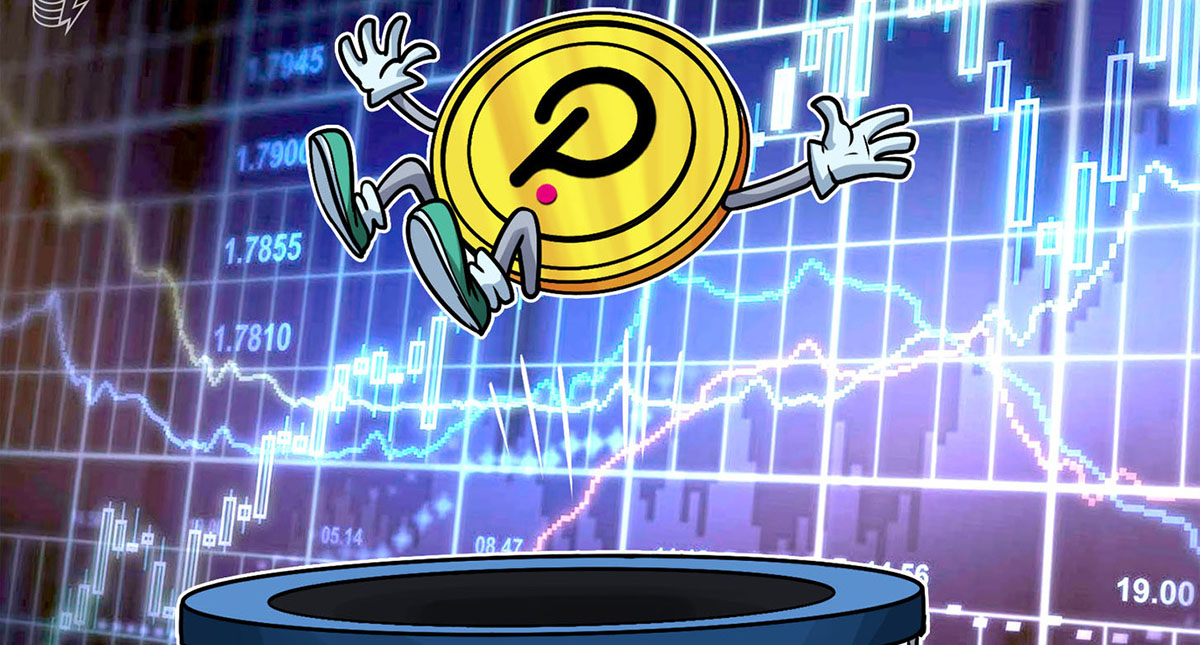Polkadot (DOT): Everything You Need To Know
At the end of August 2020, Polkadot appeared as a phenomenon that made the crypto market ripple. Polkadot market cap is among the highest in the market, but before that, almost no investor knew what Polkadot was? So what’s so special about the Polkadot project that people are rushing to learn about?
What is Polkadot?
Polkadot (DOT) is a multi-Chain, heterogeneous, and scalable blockchain network technology. This can help connect individual blockchain chains to each other, allowing these components to exchange data across the chain to maximize the resources of the entire ecosystem.
Put simply, Polkadot as a blockchain of many blockchains. This project will help users build their own blockchain on the Polkadot system easily.
What is the problem that Polkadot solves?
Transaction Processing Speed: With a parachain structure (which will be explained later), Polkadot can process up to 1000 transactions per second – this is 10 times the speed on Ethereum.
Scale: Polkadot connects many blockchains together, thereby setting the stage for future network expansion.
Reliability of new networks: With new networks, it is difficult to build large communities while mobilizing trust from stakeholders.
Polkadot Specials
- Flexible interaction: Polkadot helps to inter-chain a variety of data, assets or tokens. Polkadot supports transaction processing on parallel blockchains, helping to solve the scaling problem that currently exists on Ethereum.
- Framework Substrate: Substrate will help users easily create new blockchain chains within minutes.
- Upgrading without a fork: When integrating new features or implementing bug fixes, Polkadot does not need to hard fork like many traditional networks.
- Security: Networks will be independent in terms of governance, but security is always comprehensive. The weakness of Pow and PoS is the need for a large enough community to ensure security. But this is quite challenging for small and new projects. Polkadot will stand as the point of connection, so that the small chains can operate safely from the very beginning.
- Decentralized administration: Each individual participating in the network has a voice, can participate in the system.
Why is Polkadot potential?
The first element is innovative and very innovative technology. This idea has been analyzed quite a bit in the previous sections.
Ecosystem: Polkadot is also building itself an Ethereum-like empire spanning many areas in the DeFi industry such as Acala, Phala, Bifrost, Polkastarter, Moonbeam, or even a wallet ecosystem as notable as Math Wallet, Cobo Wallet, …
Polkadot’s market cap is currently approximately $ 4.5 billion. Meanwhile, a similar blockchain solution, Ethereum, has a market cap of $ 69.7 billion. If you consider Ethereum as a benchmark, it can be said that Polkadot has a large room to continue developing.
Polkadot does not position himself as Ethereum Killer. It can be said that Polkadot’s special feature is positioning itself as a complementary partner for all other blockchain platforms. While many of the names once “loudly” called themselves Ethereum Killer and received bitter ends, Polkadot wanted to be the place where platforms come to connect and collaborate. This is evident in the Bridge feature, bridging with Ethereum itself instead of positioning itself as a competitor.
Token DOT
The DOT token is the internal currency of the Polkadot network.
- Ticker: DOT
- Blockchain: Polkadot (DOT token standard)
- Market capitalization: $ 4,593,437,454
- Circulating Supply: 946,178,032 DOT
- Maximum total supply: 1,027,126,507 DOT
What are DOT tokens used for?
Governance: Decisions in the network will be based on the proportion of tokens the user holds.
Staking: A user can stake DOT in pools to have the opportunity to receive interest returned regularly.
Bonding: DOT is used to connect parachain chains.
Fee: When the parachains need to communicate and transfer data with each other, the system will charge the fee in the form of DOT.
Should invest in DOT token (Polkadot) or not?
Polkadot development team
In order for a project to develop to its full potential as well as maintain the speed of development, it needs a team behind that is both capable and dedicated to the project. Team Polkadot has such members. The head of the project is 3 founders:
- Robert Habermeier: In addition to being a founder of Polkadot, Robert is also a member of Tiel Fellow. He has many years of experience in blockchain, distributed systems and cryptography. He also is a member of Rust community.
- Dr. Gavin Wood: Gavin is known very early in the blockchain community as the co-founder and CTO of Ethereum. He is a pioneer in the development of the blockchain industry with many major projects, such as Solidity, the Proof-of-Authority consensus protocol, and Whisper. Currently, Gavin is the leader of Polkadot. He defined the term Web 3.0 in 2014 and was President of the Web3 Foundation.
- Peter Czaban: is the CTO of Web3 Foundation, where he supports the development of next generation decentralized technology. Peter holds a Master of Engineering from Oxford University and has worked in the defense, finance and data analysis industries, decentralized knowledge base, quantitative modeling, and more.
With these 3 outstanding names, Polkadot promises to have breakthrough steps in the future.
Partners and investors of Polkadot
In the list of investors of the Polkadot project there are 14 names. Some notable names can be mentioned are: Digital Finance Group, Monday Capital, Ledger VC, …
In addition, Polkadot is an open source project founded by the Web3 Foundation. As an open source project, it becomes very simple for any developer who wants to contribute to the project. Not only that, the Web3 Foundation has commissioned 5 teams and more than 100 developers to build Polkadot, including:
Not only that, Polkadot is also in the list of 17 projects considering the listing of Coinbase Ventures.
Roadmap
According to the Polkadot homepage, this project affirms that in the coming time, it will be development oriented to provide the most powerful platform for security, scalability, and interoperability. Polkadot will launch the genesis block in mid-2020 with a Relay Chain and several parachains. After that, the network will grow to about 100 parachains.
The roadmap of specific steps can be found in the figure below.
Conclusion
Polkadot is a very potential project. Behind it are the founders as well as investors and partners with reputation and experience in the crypto space. It helps connect blockchains together, increases scalability, and transaction speed, so it is very suitable for current hot DeFi platforms. In addition, the ROI of the DOT token is currently low and there is a high possibility that the DOT token will be listed on Coinbase. Therefore, the potential for a DOT token increase in the future is enormous.



